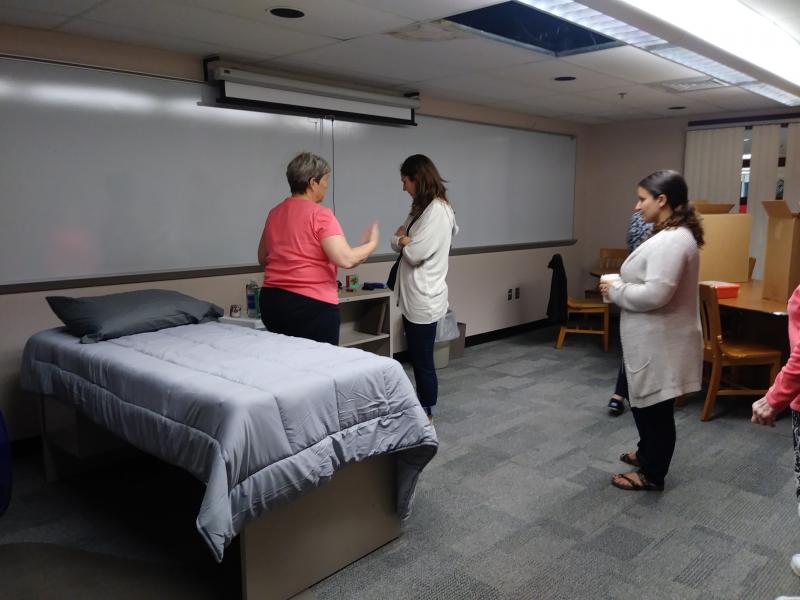With teenage drug use on the rise, communication is the solution
Parents shuffled through a mock-up of a teenager's bedroom on Thursday night, investigating the nooks and crannies for signs of drug use. Items in drawers, on shelves, on the bed and on the wall were all possible candidates.
"It's a scary room for any parent," said Marion Public Health Nurse Kathy Downey.
The mockup, called "Hidden in Plain Sight" was part of Old Rochester Regional High School's annual Open House. The program is part of Power to the Parent, a program of the Westchester Coalition for Drug and Alcohol Free Youth. Power to the Parent aims to help parents keep their teenagers safe from alcohol and drugs.
The program's online room mockup includes possible drug use clues including sports drinks, which can be mixed with clear alcohol, dryer sheets or incense for masking smell, household cleaners and pro-marijuana apparel. Any of the items could be equally innocuous.
"There's one defense that we've found is the best defense against drug and alcohol use," Downey said. "It's parental communication. Teenagers are most receptive to their parents."
She noted that according to the most recent data, the age when children first try alcohol and marijuana is getting younger and younger. "We're seeing it a bit at Old Rochester," she said, "and we're seeing some episodes of binge-drinking, although that is not Old-Rochester specific at all, but happening across the state and likely the country."
"Alcohol and marijuana experimentation is somewhat normal," Downey said, "but many pieces of what we are seeing is not normal."
The number of children trying drugs and alcohol particularly worry Downey and Mattapoisett Public Health Nurse Amanda Stone because of the way they can affect a young brain.
In a young brain, Downey noted, there should be a lot of activity in the frontal cortex, the part of the brain that makes decisions.
Drug use by teenagers interrupts that process by overstimulating the limbic system. The limbic system contains the brain's rewards circuit, and links together several brain structures that control a person's ability to feel pleasure.
Feeling pleasure, Stone noted, motivates a person to repeat behaviors that are critical to existence. While the limbic system is generally activated by life-sustaining activities such as eating and socializing, it can also be triggered by drug and alcohol use.
Drugs flood the brain's circuit with dopamine, a brain chemical which generally rewards natural behaviors. The excess dopamine from drugs and alcohol can produce a feeling of euphoria, which ends up reinforcing the behavior of drug use, and teaching the user to repeat it.
What all this means in a teenager's brain, said Downey, is that the "I want" section of the brain (the limbic system) has overtaken the frontal cortex, decision-making section of the brain. As the human brain is not generally fully-developed until age 25, diminishing use of the frontal cortex can affect a teenager's decision-making abilities for the rest of his or her life.
Downey and Stone encouraged parents to communicate with their children. "We know it's hard, because it's hard to talk to a child's back, and they love to show us their back," Downey said. "But they'll listen to their parents before they listen to anyone else."
Some of the types of communication might surprise parents—they don't strictly discuss communication on drug use, but overall communication. One available flyer, the "Do You Know Scale" was developed by doctors at Emory University. The questionnaire is comprised of 20 questions on family history, including "Do you know how your parents met?" "Do you know where some of your grandparents grew up?" and "Do you know some of the lessons that your parents learned from good or bad experiences?"
Children who score highly on the scale are associated with higher levels of self-esteem, fewer behavioral problems, and a lower risk of drug use.












